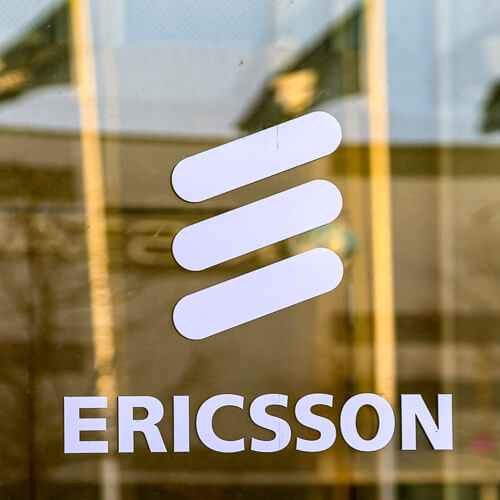
No amount of management gushing about 5G and Ericsson's strong performance in that market could enthuse investors. The Swedish equipment maker suffered one of its biggest stock-market drops in years after the publication of third-quarter results this morning, with shares down nearly 16% at noon in Europe. It has fallen 47% since the start of the year, wiping out much of the improvement it had enjoyed since Börje Ekholm replaced Hans Vestberg as CEO in 2017.
Staff at the company could be forgiven for scratching their heads in bewilderment. As Ekholm pointed out during his routine call with financial analysts this morning, Ericsson has picked up six percentage points of radio access network (RAN) market share outside China since 2017, today claiming 39% of all business. It continues to land contracts at the expense of not just Huawei, its unpopular Chinese competitor, but also Nokia, a Finnish rival that has been in 5G recovery mode after earlier missteps, according to Ekholm. Third-quarter sales rocketed 21%, to 68 billion Swedish kronor (US$6.1 billion), compared with the year-earlier period.
Figure 1: Ericsson's share price (SEK)  (Source: Google Finance)
(Source: Google Finance)
The improvement was far less on a constant-currency basis, though – just 3% overall and about 4% at the networks division accounting for more than 70% of sales. Worse, profitability was hurt by a SEK1.1 billion ($98 million) year-on-year slump in licensing revenues, which analysts at Danske Bank attribute to ongoing litigation with Apple, and higher component costs. After pumping even more into research and development than it did a year earlier, Ericsson was left with an networks operating margin of 19.9% – down 3.8 percentage points year-on-year. Further down the P&L statement, overall net profit dropped 7%, to SEK5.4 billion ($480 million).
The outlook is troubling, too. Ericsson generates about 39% of its revenues in North America, which was by far its fastest-growing regional market for the third quarter. A slowdown is on the near horizon. "Operators are guiding for lower capex in 2023," said Ekholm. His hope is that other regions will pick up the slack, and Ericsson has just landed important 5G contracts in India. But it is spending heavily in the interests of boosting its footprint.
No digital turnaround
Add to that Ericsson's perennially underperforming digital services part, now lumped together with managed services in the new-look cloud software and services division. Revenues there came to SEK14.2 billion ($1.3 billion), dropping 5% on a constant-currency basis, and its loss widened by SEK500 million ($44.8 million), to SEK800 million ($71.6 million). Shareholders seem increasingly bothered by Ekholm's failure to turn it around.
"We have underperformed in this area for a long time, but we have seen a relatively strong improvement compared with 2017, when losses were much bigger," said Ekholm in response to analyst questions. System integration costs in this area are higher than he expected, and the rollout of "standalone" 5G – the version of the technology that adds a 5G core to the RAN products already being sold – has been slow. That explains why Ericsson's 5G core sales have been disappointing.
Want to know more about 5G? Check out our dedicated 5G content channel here on Light Reading.
Cost cuts are now planned. "We'll work on taking costs out and it touches both COGS [cost of goods sold] and the G&A [general and administrative] structure of the company," said Ekholm, adding that a leaner organization will be more agile and better at responding to customer demands.
While Ericsson is unlikely to slash R&D spending, this all raises the prospect of job cuts several years after the last big round of layoffs, when Ericsson's workforce shrank by 16,105 employees in the two years leading up to December 2018.
Vonage griping
Since then, takeover activity and growth has pushed the number up more than 9,000, to about 104,490 at the end of September. The $6.2 billion acquisition of Vonage, Ericsson's biggest deal, explains most of that increase and forms part of an enterprise-sector diversification strategy that many have questioned. Ekholm's belief is that Vonage's sizeable community of software developers can be unleashed on 5G, writing application programming interfaces (APIs) for the enterprise sector. Including Vonage, Ekholm expects the overall enterprise offering to have a growth potential "north of 20% a year," he said today.
The new enterprise unit generated SEK5.2 billion ($470 million) in sales for the third quarter, up 231% year-on-year thanks to the Vonage deal. Acquisition fees caused the enterprise operating loss to widen by SEK900 million ($80.6 million), to SEK1.7 billion ($150 million), even though Vonage is profitable. But analysts are skeptical that Vonage developers – used to writing APIs for voice services or SMS – can easily pivot to 5G. Nor will everyone share Ekholm's optimism that Vonage APIs will spur revenue growth for telcos.
His desire to see that happen is understandable, though. "Creating new revenue sources for operator customers is critical, because if they can't monetize investments in the network they will ultimately not invest in the network," he said. With telco sales growth sluggish, and costs steadily rising, the concern inside one of the world's biggest telco suppliers is hardly a surprise.
Related posts:
— Iain Morris, International Editor, Light Reading
About the Author(s)
You May Also Like











